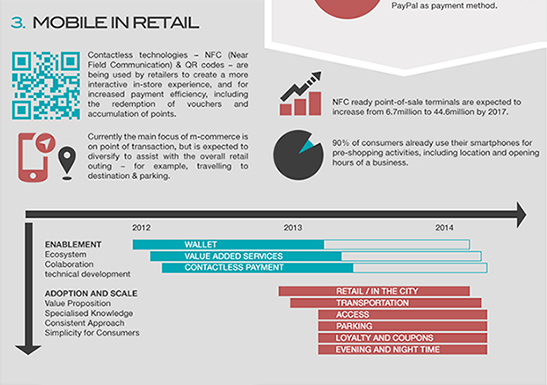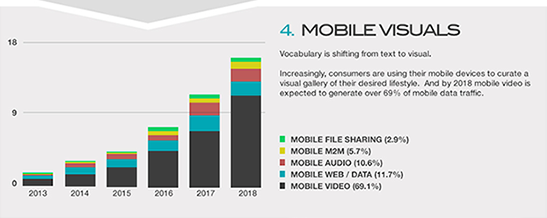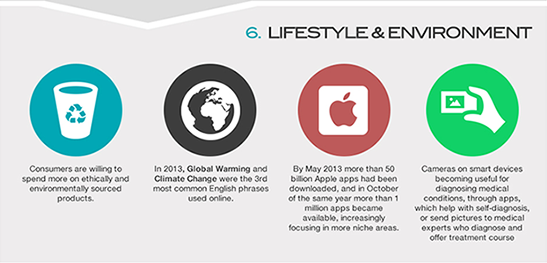
The Cloud and Mobile Data
The cloud is set to continue as the major source of data for mobile users, with information coming from the cloud increasing to 90% in 2018, compared to 82% in 2013. The increased availability of 4G networks will enhance the user experience, by improving speeds and download capabilities. With increases in both network capacity and the number of people using multiple mobile devices, experts expect that network operators will likely start offering mobile broadband packages as fixed-price deals. Figure 2 depicts this data.
Mobile Commerce
The sustained growth in mobile usage will have a significant impact on businesses that are considering selling online. The increasing importance of easy-to-use, responsive, online sales platforms is clear. Astonishingly, m-commerce is expected to reach $626 billion in sales by 2018, compared to $636 billion across all platforms now, as shown in Figure 2. This will come as no surprise in the Far East. In Japan, for example, 30% of all ecommerce sales are now via mobile platforms. In Q4 of 2013, 50% of all Amazon sales came from mobile sources. Plus, online payments provider PayPal saw a 115% growth in mobile transactions on Black Friday. You can see more information about mobile commerce in Figure 2.

Mobile in Retail
One significant growth area in the usage of mobile technologies takes the form of enhancements that mobile can provide to the real-world shopping experience. Although there is still a long way to go, over 90% of mobile users regularly use devices to check information such as store opening times and locations. Over the last few years, brands have gone all out in facilitating the use of mobile wallets and payments and offering value-added services.
In the future, we’ll see companies enhance the full in-store shopping experience. Interesting developments are already occurring to improve things like parking, transport, access, and evening or night-time shopping for users. Brands are also investing heavily in research on how the use of mobile may affect consumer behavior through loyalty schemes and discount vouchers. Expect the all-around in-store shopping experience to change as apps and augmented reality bring the shopping experience to life.
There are still more developments afoot in the retail arena, particularly in making payments and product selection more efficient. We’ll see further integration of Near Field Communications (NFR) and QR Codes (Quick Response Codes). The widespread availability of apps employing these technologies will improve the interactive in-store experience, increase payment efficiency, and deliver evolutions in the use of vouchers and loyalty schemes. Indeed, installations of NFR-ready, point-of-sale terminals are expected to grow from around 7 million now to almost 45 million in 2017. Figure 3 depicts the evolution of mobile in retail contexts.

Mobile Visuals
Changes in network speeds, data storage, and connectivity will also likely impact the media that we have traditionally used to connect with each other. Continued increases in the consumption of mobile video will counterbalance the decreases in the use of text and pictures. It is expected that video will make up 69% of all mobile traffic by 2018, as shown in Figure 4.



